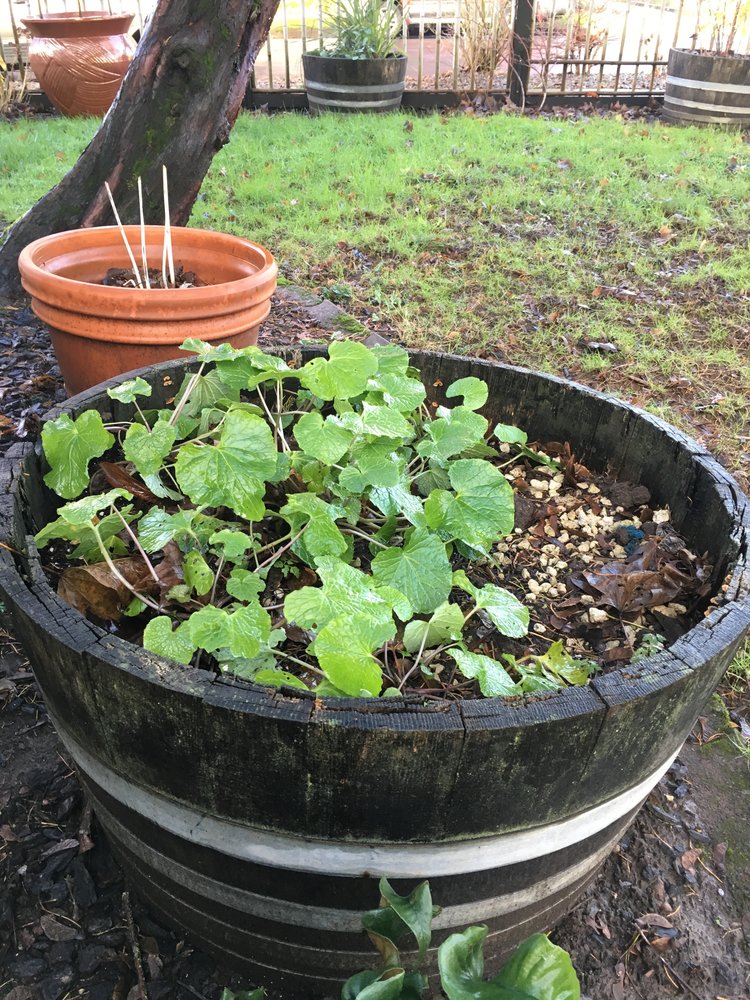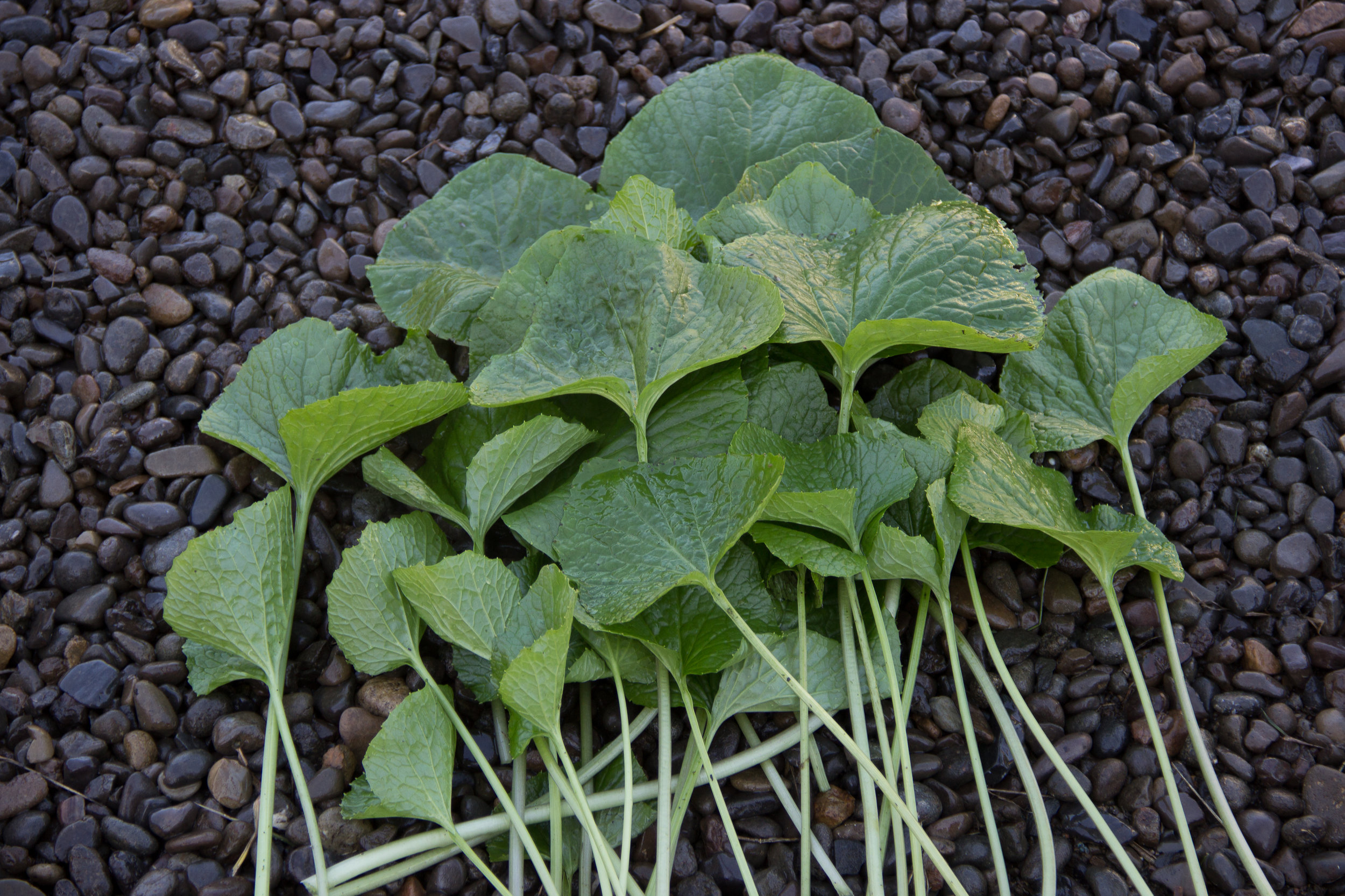You Can Grow Wasabi In Your Back Yard
It is easier to grow wasabi than you might think!
We recently sat down with Jennifer Bloeser talking about how to grow Wasabi Plant Starts here in the US.
Jennifer Bloeser is the CEO and Co-founder (along with her husband Markus) of Oregon Coast Wasabi.
Below is what we learned from Jennifer.
How To Grow Wasabi Plant Starts
People offer think that it is very difficult to grow wasabi. The truth is that there are only a couple of secrets to growing wasabi and after to speaking with Jennifer we now know those secrets and this article will share those secrets with you!
Not only do Jennifer and Markus have the largest wasabi farm in the United States, they also grow wasabi in their very own yard in half wine barrels.
Wasabi Plants Needs Full Shade
If you are going to grow wasabi in your backyard you need to make sure that your wasabi plants have full shade.
You can use the shade of another tree, the corner of your from porch, against your deck. Anywhere that you can get full shade.
To be overly clear – if a wasabi plant gets sunlight it will wither and droop very quickly.
Water Your Wasabi Plant Like You Would Water Lettuce
Lettuce lets you know right away if it needs more water. Bottom line – keep the sail moist.
Please note; while a wasabi plants native habitat in Japan is in a streambed, wasabi is not an aquatic plant and wasabi does not like to be in standing water.
Bottom Line – well drained, wet soil but not standing water.
You Can Grow Wasabi in Pots
One option that is very successful for growing wasabi is to plant your wasabi starts in 1 to 2 gallon pots with good potting soil. Doing this gives you flexibility for when the weather turns too cold or too hot. When that happen happens simply bring your wasabi plant indoors.
So what is too hot or too cold? Glad you asked! See immediately below for that answer!
What Parts of the United States Can You Grow Wasabi In?
Wasabi can and does grow all over the United States!
What you need to watch out for is weather that is too either too hot or too cold.
If the weather gets over 80 degrees or under 32 degrees - simply bring your pots inside and keep them out of direct sunlight.
If the weather is going to be over 80 degrees for just a few days and then go back to being under 80 degrees, you can leave the plants outside as they can handle warmer weather for a couple of days.
The Myth of Wasabi Seeds
Sadly, many of the wasabi seeds that are sold today (especially online) are not real wasabi i.e.
Wasabia japonica, they are actually mustard seeds or seeds for “wasabi” mustard for arugula or seeds for “wasabi” arugula.
Please note neither “wasabi” mustard or “wasabi” arugula is real wasabi. One is a variety of mustard and the other is a variety of arugula.
There is a reason that the largest reputable US seed companies don’t sell wasabi seeds on their own websites.
Wasabi seeds are very rare because they are very difficult to harvest.
You are much better off simply getting wasabi plant starts and growing those.
How Long Before Harvest
You can harvest three things from your Wasabi Plant Starts -
#1 The plant stalk i.e. the part that gets grated into wasabi paste. That part is knobby and green ands sticks up just above the dirt. This is often called the rhizome.
#2 The greens (leaves)
#3 The leaf stalk, or stems if you prefer.
15 months to 2 years after you plant your wasabi start you can harvest the plant stalk (the rhizome).
This is the part of the wasabi plant that is grated into wasabi paste.
To harvest the plant stalk you pull the whole plant up and you will see some off-shoots / plant starts. Simply break those off. You can replant those and begin right away growing more wasabi!
Take the plant stalk and only grate want you want to use right then. The rest you store in the refrigerator and when stored properly, it will keep for weeks.
Keep your wasabi plant stalk in a plastic bag with a damp paper towel.
8 weeks after planting your wasabi start you can begin harvesting Wasabi greens i.e. the leaves.
Wasabi greens are delicious and have many culinary uses!
When you harvest wasabi greens make sure to leave the little leaf that is sprouting from the very top center of the plant.
Wasabi plants grow leaves year round and you can keep harvesting leaves every 6 -8 weeks and enjoy wasabi greens during the whole 15 months to two years that you are growing the plant stalks.
Wasabi greens can be eaten raw and you use them in cooking – they can be sautéed, juiced, or used raw in a salad!
One of Oregon Coast Wasabi’s customers has made a spanakopita using wasabi greens instead of spinach!
The same 8 weeks applies to the leaf stalk or stem. When you harvest wasabi green make sure to also harvest the leaf stalk.
Wasabi leaf stalks are delicious! They are spicy and crunchy and you can eat them raw and use them in cooking. Think of them as thin spicy celery.
Just like the Wasabi greens You can sauté Wasabi leaf stalks, steam them, juice them, or simply snip them with kitchen shears and put them into your mashed potatoes for wonderful wasabi mashed potatoes!
Getting Started!
If you want to grow wasabi in your back yard the best way to get started is to order wasabi plant starts.
Those who order wasabi plant starts from the Wasabi Store receive a copy of The Oregon Coast Wasabi Guide to Growing Wasabi.
Here is a link for you to buy Wasabi Plant Starts - www.thewasabistore.com/shop/wasabi-plant-starts

















